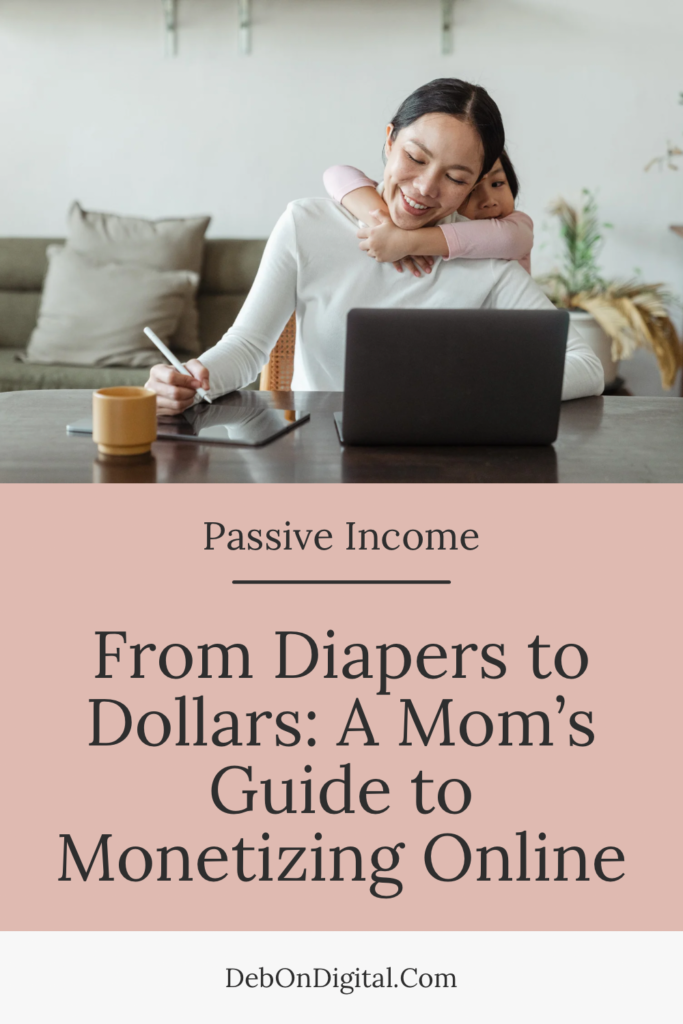Ready to dive into the exciting world of digital product marketing? Whether you’re a seasoned pro or just starting, this guide will walk you through the essential strategies for success in the dynamic realm of digital products.
So, get comfortable, grab your favourite beverage, and let’s jump into this journey together.
What’s the Buzz About Digital Product Marketing?
Digital product marketing is the secret sauce behind successful online businesses. It’s not just about having a great product; it’s about letting the world know it exists.
In this digital age, where attention spans are shorter than ever, mastering the art of digital product marketing is a game-changer.
Understanding the Basics
Let’s start with the basics. Digital product marketing involves promoting and selling products using online channels. This could be anything from e-books and online courses to software and mobile apps.
The key is to leverage digital platforms to connect with your target audience and turn them into loyal customers.
Essential Strategies for Digital Product Marketing Success
1. Know Your Audience Like a Best Friend
Knowing your audience like a best friend is a key principle in digital product marketing. It goes beyond just having a basic understanding of demographics; it involves creating a detailed and empathetic understanding of your target audience.
Let’s break down this strategy further:
Understanding the “Best Friend” Analogy:
Think about your best friend. You know their likes, dislikes, dreams, and even their pet peeves. You understand what makes them tick, what challenges they’re facing, and what brings them joy. Translating this analogy to digital product marketing means developing a deep, personal understanding of your audience.
Creating Buyer Personas:
One practical way to achieve this understanding is by creating buyer personas. A buyer persona is a semi-fictional representation of your ideal customer based on market research and real data about your existing customers. This includes demographics, behavior patterns, motivations, and goals.
Example Persona: Meet Alex, a 30-year-old tech-savvy professional who values time efficiency and is always looking for the latest tools to streamline work.
Tailoring Your Messaging:
Knowing your audience intimately allows you to tailor your marketing messages to resonate with them on a personal level. Instead of generic, one-size-fits-all communication, you can craft messages that speak directly to their needs, aspirations, and pain points.
Example Messaging: “Say goodbye to wasted hours on tedious tasks! Our product, like a trusted ally, boosts your efficiency, giving you more time for what truly matters.”
Personalizing User Experience:
Understanding your audience like a best friend extends to the user experience. Whether it’s your website, app, or email campaigns, personalized experiences make users feel seen and valued. This might involve recommending products based on past behavior, addressing users by their name, or tailoring content to their preferences.
Example User Experience: “Welcome back, Alex! Based on your previous searches, here are some new features you might find interesting.”
Feedback Loops:
Best friends value each other’s opinions and feedback. Similarly, in digital product marketing, establishing feedback loops is crucial. Actively search for, and listen to customer feedback. Understand what they love about your product and areas where you can improve.
This not only improves your product but also strengthens the bond with your audience.
Example Feedback Loop: Regular surveys or feedback forms, with questions like “How can we make our product better for you?”
Staying Agile:
Friendships evolve, and so do the needs and preferences of your audience. Stay agile and adaptable. Monitor changes in market trends, user behaviour, and technological advancements. What delighted your audience yesterday might not have the same impact tomorrow.
Example Adaptation: Integrating new features based on emerging industry trends or responding to shifts in user preferences.
In essence, knowing your audience like a best friend involves a holistic understanding that goes beyond surface-level demographics. It’s about empathy, personalization, and an ongoing commitment to staying connected with your audience as they grow and evolve. By making your audience feel understood and valued, you build a foundation for long-lasting relationships that go beyond mere transactions.
2. Craft Compelling Content
Crafting compelling content is a cornerstone of successful digital product marketing. In a world inundated with information, your content is your voice — it’s how you communicate your brand, engage your audience, and ultimately drive conversions. Let’s delve into the intricacies of crafting content that captivates and converts:
Understanding Compelling Content:
Compelling content is not just about words on a page or pixels on a screen. It’s about creating an emotional connection, providing value, and sparking a reaction from your audience. Whether it’s a blog post, a social media update, or a video, your content should resonate and leave a lasting impression.
Know Your Brand Voice:
Your brand has a personality, a voice that should be consistent across all your content. Are you playful and humorous, or are you more formal and serious? Understanding your brand voice helps in creating content that feels authentic and aligns with your brand identity.
Example: If your brand is known for its friendly and approachable vibe, your content might include casual language and even some humour.
Value First, Promotion Second:
While the ultimate goal is to promote your product, your content should lead with value. Solve problems, answer questions, and provide insights that your audience finds genuinely useful. This builds trust and positions your brand as an authority in your niche.
Example: A SaaS company might create blog posts on productivity tips or how-to guides related to their product.
Storytelling Matters:
Humans are wired to love stories. Whether it’s a success story of a customer using your product or the journey of how your product came to be, storytelling creates an emotional connection. It makes your content more relatable and memorable.
Example: Share stories of real users and how your product made a positive impact on their lives.
Visual Appeal:
In the digital space, visuals are powerful. Use high-quality images, infographics, and videos to enhance your content. Visual elements not only grab attention but also help in conveying information more effectively.
Example: If you’re launching a new feature, create a visually appealing video that showcases its functionality.
SEO Optimization:
Crafting compelling content is not just about engaging your audience; it’s also about being discoverable. Optimize your content for search engines by incorporating relevant keywords naturally. This helps in improving your content’s visibility on search engine results pages.
Example: If your product is a project management tool, ensure that your content includes keywords like “project management tips” or “efficient task management.”
Consistency Across Platforms:
Whether your audience encounters your brand on social media, your website, or through email, there should be a consistent thread in your messaging and tone. This builds brand recognition and makes your content more cohesive.
Example: If your brand is known for its minimalist aesthetic, maintain that simplicity in visuals and messaging across all platforms.
Engage and Respond:
Compelling content sparks conversations. Encourage engagement by asking questions, seeking opinions, and responding to comments. This not only boosts your online presence but also shows that you value your audience’s input.
Example: Ask your audience about their favorite features of your product or for suggestions on improvements.
Data-Informed Iteration:
Regularly analyze the performance of your content. Which pieces resonated the most? What was the engagement like? Use analytics to understand what works and what can be improved. This data-driven approach allows you to refine your content strategy over time.
Example: If video content consistently receives higher engagement, consider producing more video content in your future strategy.
3. Leverage Social Media Wisely
Leveraging social media wisely is a crucial aspect of digital product marketing. Social media platforms offer a dynamic space to connect with your audience, build brand awareness, and drive engagement. Here’s a breakdown of how to navigate the social media landscape wisely:
Choosing the Right Platforms:
Not all social media platforms are created equal, and not every platform may be suitable for your digital product. Understand where your target audience spends their time. If you’re in the B2B space, platforms like LinkedIn might be more effective, while visually-oriented products might thrive on Instagram.
Example: A lifestyle app might find success on Instagram, where visual content is king.
Consistent Branding Across Platforms:
Maintain a consistent brand identity across all social media platforms. This includes using the same profile picture, cover photo, and bio information. Consistency builds brand recognition and fosters trust among your audience.
Example: If your brand color is blue, use the same shade of blue across all your social media profiles.
Engage Authentically:
Social media is not just a broadcasting tool; it’s a place for conversation. Engage authentically with your audience. Respond to comments, ask questions, and participate in discussions. Humanize your brand by showing the people behind the product.
Example: Respond to user comments with personalized messages and thank them for their support.
Content Variety:
Diversify your content. Mix in different types of content such as images, videos, infographics, and text posts. This keeps your feed interesting and caters to different audience preferences.
Example: Share behind-the-scenes content, user testimonials, and educational videos about your product.
Strategic Hashtags:
Hashtags are the social media currency. Use relevant and strategic hashtags to increase the discoverability of your content. Research popular hashtags in your industry and create a branded hashtag for your campaigns.
Example: If you’re launching a new feature, create a unique hashtag like #ProductXperience to track related conversations.
Posting Schedule:
Timing is crucial on social media. Understand the peak times when your audience is most active. Tools like Hootsuite or Buffer can help you schedule posts in advance, ensuring a consistent and strategic posting schedule.
Example: If your audience is mostly active in the evenings, schedule your important announcements or posts during that time.
Paid Advertising:
Consider paid advertising options on social media platforms. These can provide targeted exposure to specific demographics. Social media ads allow you to reach beyond your organic audience and can be a powerful tool for product launches or promotions.
Example: Use Facebook Ads to target users based on their interests and behaviors.
Community Building:
Create a sense of community around your product. Encourage user-generated content, host contests, and feature customer testimonials. A community fosters loyalty and turns customers into advocates.
Example: Create a Facebook Group where users can share tips and experiences related to your product.
Analytics and Iteration:
Regularly analyze social media analytics to understand what’s working and what’s not. Metrics like engagement rates, click-through rates, and follower growth provide valuable insights. Use this data to iterate and refine your social media strategy.
Example: If posts featuring customer stories receive high engagement, consider making user stories a regular part of your content strategy.
Stay Trend-Aware:
Social media trends come and go. Stay aware of current trends and leverage them when appropriate. This shows that your brand is current and responsive to the ever-evolving social media landscape.
Example: Participate in popular challenges or trends relevant to your product or industry.
4. Optimize for Conversions
Getting traffic is good, but converting that traffic into customers is even better. Optimize your website and landing pages for conversions. Ensure a smooth user experience, make your call-to-action buttons irresistible, and minimize any friction in the buying process.
Pro Tip: A/B test different elements of your landing pages to see what resonates best with your audience.
5. Harness the Power of Email Marketing
Email is not dead; it’s very much alive and kicking. Build an email list and nurture it with valuable content. Use email campaigns to keep your audience informed about product updates, exclusive offers, and relevant industry news.
Pro Tip: Personalize your email campaigns based on user behavior. This makes your messages more relevant and engaging.
6. Invest in Influencer Marketing
Influencers have already built trust with their audience. Partnering with the right influencers can give your product an instant credibility boost. Choose influencers whose values align with your brand, and let them spread the word.
Pro Tip: Micro-influencers often have a more engaged and niche audience, making them excellent partners for targeted marketing.
7. Data-Driven Decision Making
In the digital realm, data is your best friend. Use analytics tools to track the performance of your marketing efforts. Analyze user behavior, conversion rates, and other key metrics to make informed decisions.
Pro Tip: Regularly review your analytics and adjust your strategy accordingly. What worked last month might not work this month.
Conclusion: Mastering the Digital Symphony
Digital product marketing is like conducting a symphony. Each strategy plays a unique role, and when orchestrated correctly, they create a harmonious melody that resonates with your audience. Remember, it’s not just about selling a product; it’s about creating a meaningful connection with your customers.
So, there you have it — Digital Product Marketing 101: Essential Strategies for Success. Dive in, experiment, and don’t be afraid to tweak your approach. The digital landscape is ever-evolving, and those who adapt and innovate are the ones who stand out.
Happy marketing, digital rockstars!











